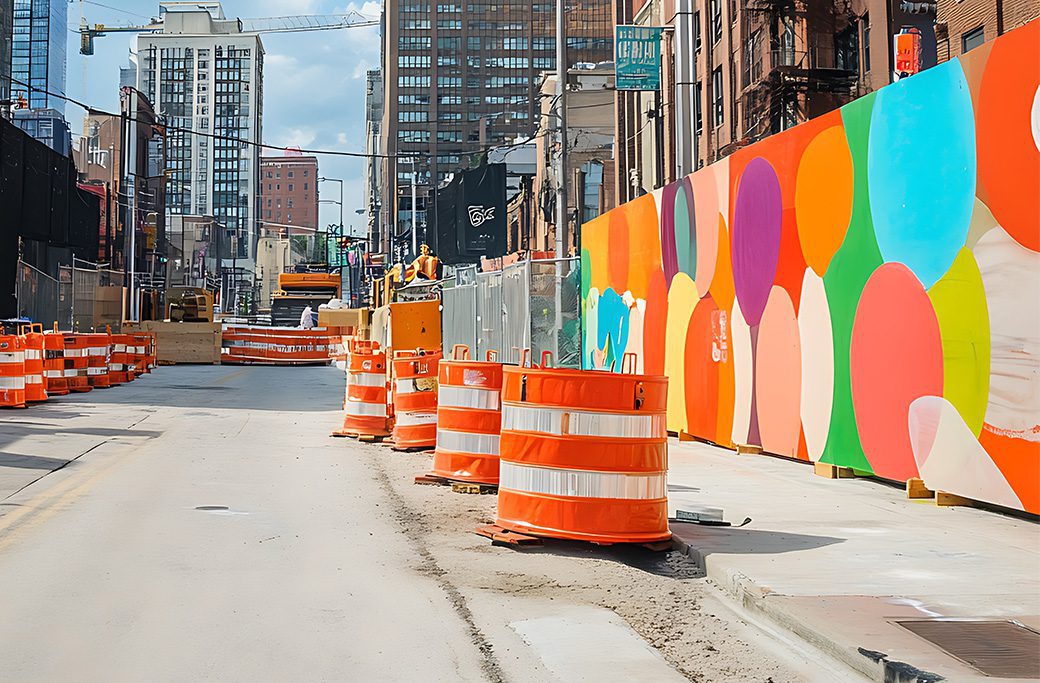As an event planner or safety manager, ensuring the safety and organization of your event is crucial. This responsibility not only involves managing the logistics of your event but also ensuring that every attendee feels safe and secure. One of the most effective tools at your disposal for achieving this is pedestrian fencing. From crowd control to creating secure zones, pedestrian fencing plays a critical role in maintaining order and protecting attendees. Let’s explore some of the key benefits and uses of pedestrian fencing in event planning and safety.
What is Pedestrian Fencing?
Pedestrian fencing encompasses a range of temporary structures designed to control and direct the movement of people at events. These fences come in various types, including:
- Temporary Fencing: Lightweight and portable, ideal for creating boundaries and directing foot traffic.
- Barriers: Structures often used to prevent access to specific areas or protect certain zones.
- Gates: Controlled entry points that can manage the flow of attendees into and out of different sections of the event.
Each type of pedestrian fencing serves a unique purpose, contributing to the overall safety and organization of your event.
Pedestrian Fencing for Crowd Control
One of the primary reasons for using pedestrian fencing is crowd control. Here’s how it makes a difference:
- Directing Crowd Flow: Pedestrian fences guide large crowds, ensuring orderly movement. This prevents bottlenecks and lowers the risk of stampedes, especially in busy areas.
- Creating Secure Zones: Fences can mark out different zones at your event, like VIP areas, backstage zones, and smoking areas. This boosts security and enhances attendee experience.
- Protecting Attendees: Keeping people in designated areas with fencing reduces the risk of accidents and injuries. It also creates safe pathways, especially for events near busy roads or hazardous areas.
Pedestrian Fencing Applications
Many successful events utilize pedestrian fencing for safety and organization. Here are a few examples:
Music Festivals
At large music festivals, pedestrian fencing is crucial for managing the flow of thousands of attendees. Extensive pedestrian fencing is used to create secure perimeters, manage entry and exit points, and separate different zones within the festival grounds. This ensures that attendees can enjoy the event safely and without incident.
Sporting Events
Sporting events often involve large, enthusiastic crowds. Pedestrian fencing is deployed along the edge of a race route or sport field to keep spectators at a safe distance from the athletes. This not only protects the athletes but also prevents accidents and ensures that the event runs smoothly.
Corporate Gatherings
For corporate events, pedestrian fencing helps to create an organized and professional environment. At conferences and trade shows, fences can be used to guide attendees to registration areas, keynote speeches, and breakout sessions. This enhances the overall experience and ensures that the event runs efficiently.
Customizing Pedestrian Fences for Different Events
Pedestrian fences can be customized to suit the specific needs of different events:
- Music Festivals: Use colorful, branded barriers to enhance the event’s vibe and ensure safety.
- Sporting Events: Set up strong barricades to handle large crowds and provide clear signs to guide people.
- Corporate Gatherings: Choose sleek, professional fences that match the event’s decor.
Customization ensures that your pedestrian fencing not only serves its safety purpose but also complements the overall look and feel of your event.
Addressing Common Misconceptions
There are several misconceptions about pedestrian fencing that we need to address:
- “Fences Make Events Look Unwelcoming”: When properly designed and installed, pedestrian fences can enhance the aesthetics of your event, creating a more organized and professional appearance.
- “They Are Too Expensive”: The cost of pedestrian fencing is a worthwhile investment when considering the potential costs of accidents and lawsuits resulting from poor crowd control.
- “They Are Unnecessary for Small Events”: Even smaller events can benefit from pedestrian fencing to manage entry points, create designated areas, and enhance the overall safety of attendees.
Best Practices for Using Pedestrian Fencing
To maximize the effectiveness of pedestrian fencing at your event, consider these best practices:
- Plan Ahead: Determine key spots for fencing, such as entry and exit points, high-traffic areas, and restricted zones.
- Ensure Visibility: Make your fences noticeable to attendees with bright colors or signs.
- Regular Inspections: Frequently check your pedestrian fences to keep them secure and in good shape throughout the event.
- Professional Installation: Hire experienced professionals, like Mobile Fencing Inc., to install your fencing correctly and safely.
Importance of Pedestrian Fencing for Event Safety
Pedestrian fencing is an essential tool for ensuring event safety and organization. By understanding the various types of fencing available and how they can be utilized, you can create a safer and more enjoyable experience for your attendees. Whether you’re planning a large music festival, a sporting event, or a corporate gathering, pedestrian fencing should be a key component of your event safety strategy.
For all your pedestrian fencing needs, trust us at Mobile Fencing Inc. Contact us today to learn more about our services and how we can help make your event a success.






